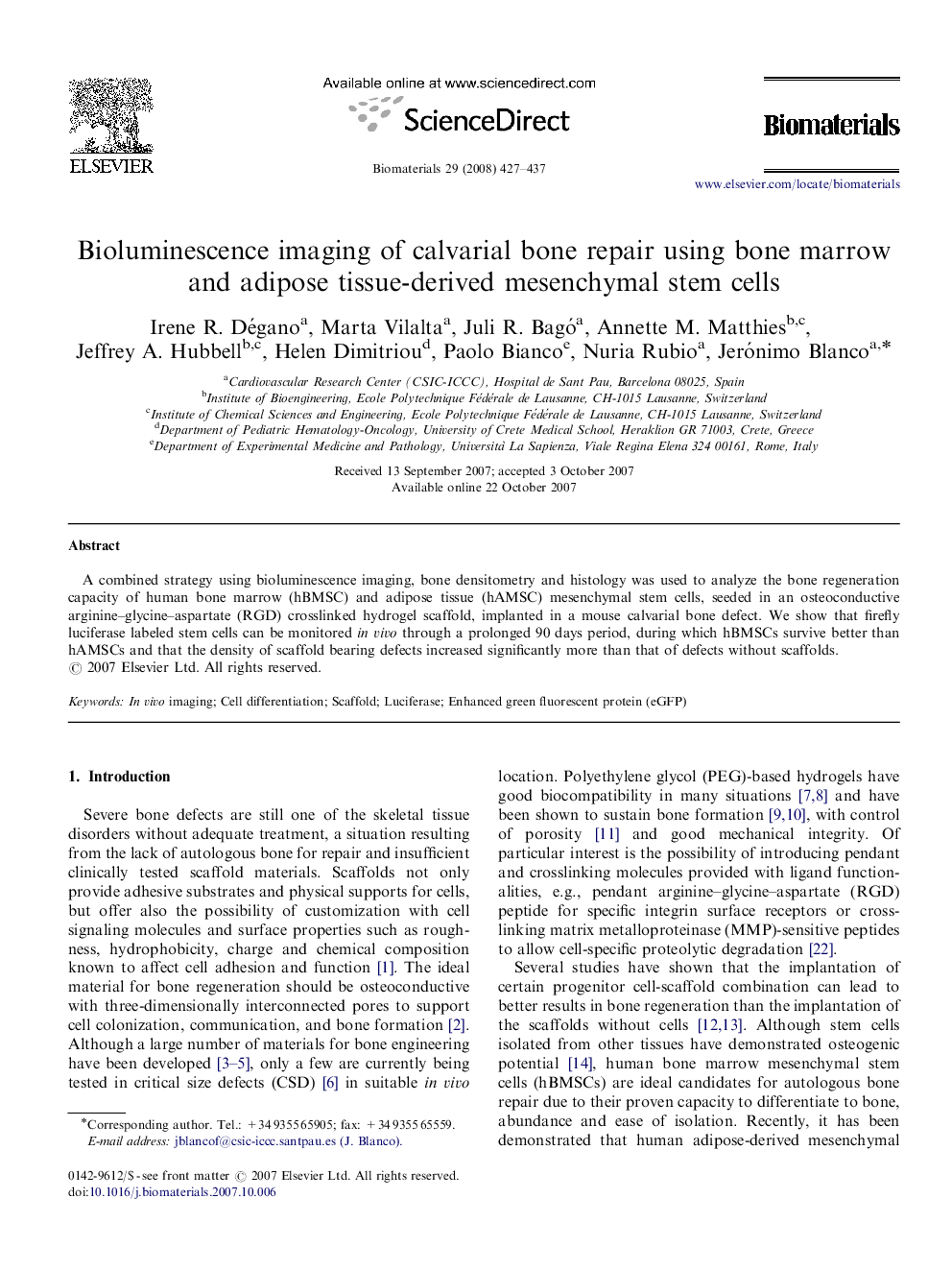| Article ID | Journal | Published Year | Pages | File Type |
|---|---|---|---|---|
| 10109 | Biomaterials | 2008 | 11 Pages |
Abstract
A combined strategy using bioluminescence imaging, bone densitometry and histology was used to analyze the bone regeneration capacity of human bone marrow (hBMSC) and adipose tissue (hAMSC) mesenchymal stem cells, seeded in an osteoconductive arginine–glycine–aspartate (RGD) crosslinked hydrogel scaffold, implanted in a mouse calvarial bone defect. We show that firefly luciferase labeled stem cells can be monitored in vivo through a prolonged 90 days period, during which hBMSCs survive better than hAMSCs and that the density of scaffold bearing defects increased significantly more than that of defects without scaffolds.
Keywords
Related Topics
Physical Sciences and Engineering
Chemical Engineering
Bioengineering
Authors
Irene R. Dégano, Marta Vilalta, Juli R. Bagó, Annette M. Matthies, Jeffrey A. Hubbell, Helen Dimitriou, Paolo Bianco, Nuria Rubio, Jerónimo Blanco,
